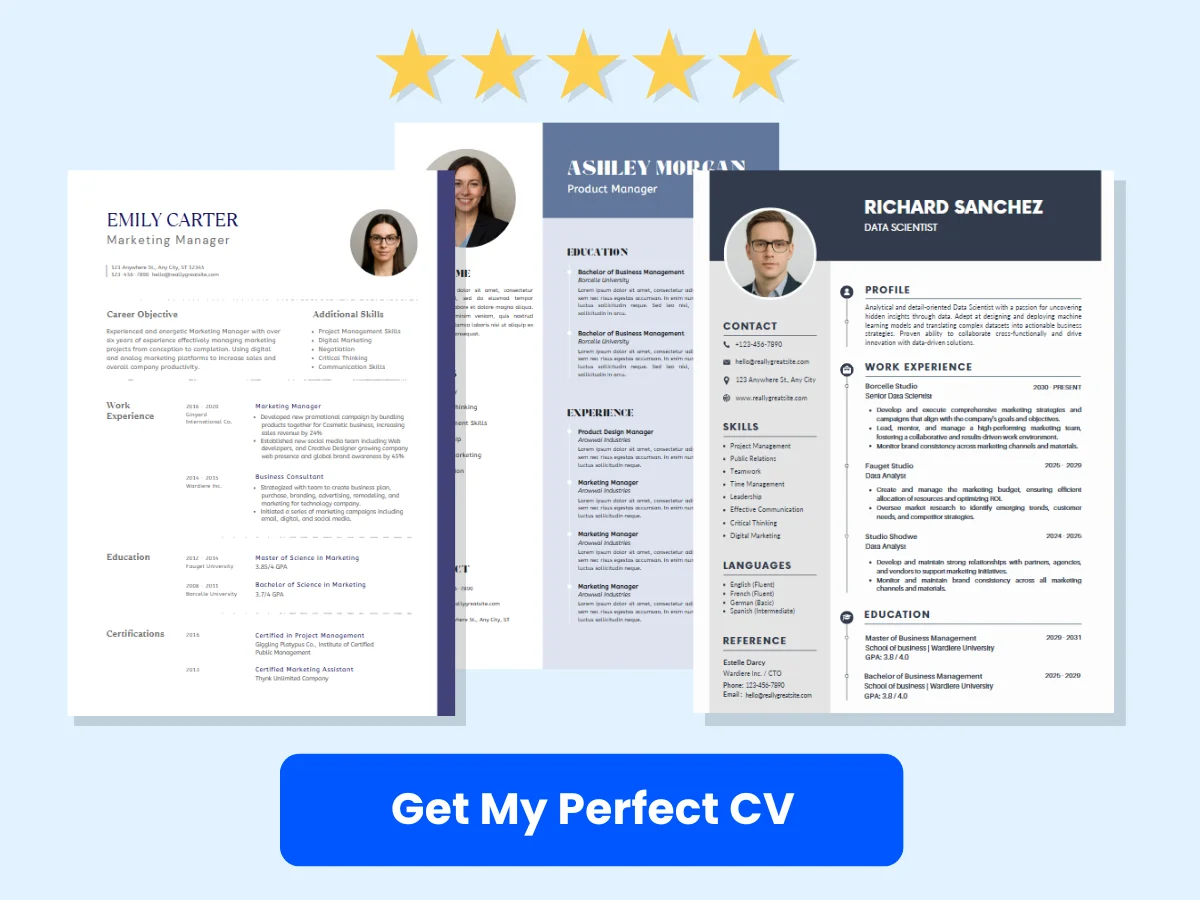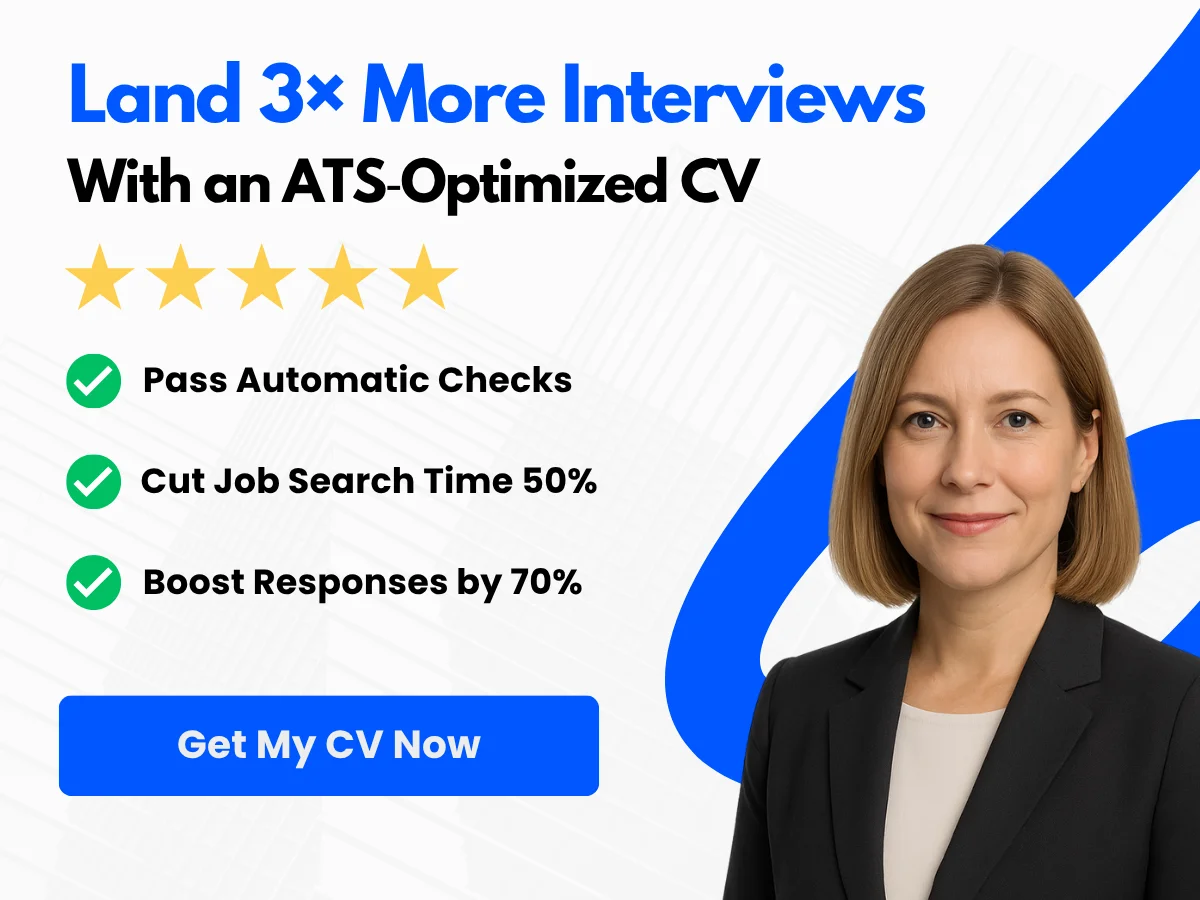In the fast-paced world of job hunting, waiting for interview feedback can feel like an eternity. Candidates often find themselves in a state of uncertainty, wondering when they will hear back from potential employers and what the feedback might entail. Understanding the interview feedback timeline is crucial for job seekers, as it not only helps manage expectations but also informs their next steps in the application process. This article delves into the typical timelines for receiving feedback after interviews, the factors that can influence these timelines, and strategies for effectively following up. By the end, you’ll be equipped with the knowledge to navigate the post-interview period with confidence, ensuring you remain proactive in your job search while awaiting that all-important response.
Pre-Interview Preparation
Exploring the Hiring Timeline
Understanding the hiring timeline is crucial for both employers and candidates. It sets the stage for what to expect during the recruitment process and helps manage expectations. The hiring timeline can vary significantly depending on the organization, the role being filled, and the urgency of the hiring need. Typically, the timeline can be broken down into several key phases:
- Job Posting and Application Period: This is the initial phase where the job is advertised, and candidates submit their applications. Depending on the organization, this period can last anywhere from a week to a month.
- Initial Screening: After the application period closes, the hiring team reviews resumes and applications. This phase usually takes one to two weeks, depending on the volume of applications received.
- Interviews: Once candidates are shortlisted, interviews are scheduled. This phase can take several weeks, especially if multiple rounds of interviews are involved. Each round may require coordination with various stakeholders, which can extend the timeline.
- Feedback and Decision-Making: After interviews, the hiring team discusses candidates and makes decisions. This phase can take one to two weeks, as it often involves deliberation and consensus-building among team members.
- Offer and Negotiation: Once a candidate is selected, an offer is extended. This phase can vary widely based on the candidate’s response and any negotiations that may occur.
- Onboarding: After the offer is accepted, the onboarding process begins, which can take several weeks to months, depending on the organization’s procedures.
By understanding this timeline, candidates can better anticipate when they might receive feedback and how long the overall process may take. Employers, on the other hand, can streamline their processes to ensure timely communication and decision-making.
Setting Expectations with Candidates
Setting clear expectations with candidates is essential for maintaining a positive candidate experience. When candidates know what to expect, they are less likely to feel anxious or frustrated during the waiting period. Here are some strategies for effectively setting expectations:
- Communicate the Timeline: During the initial stages of the interview process, provide candidates with a clear timeline of what to expect. This includes when they can expect to hear back after interviews and any potential delays that may arise.
- Be Transparent About the Process: Explain the steps involved in the hiring process, including who will be involved in decision-making and how feedback will be gathered. Transparency helps candidates feel more informed and engaged.
- Regular Updates: Even if there is no new information to share, regular updates can reassure candidates that they are still being considered. A simple email stating that the process is ongoing can go a long way in alleviating anxiety.
- Encourage Questions: Invite candidates to ask questions about the process. This not only helps clarify any uncertainties but also fosters a sense of openness and communication.
By setting clear expectations, employers can enhance the candidate experience and reduce the likelihood of candidates withdrawing from the process due to uncertainty or frustration.


Communicating the Feedback Process
Effective communication of the feedback process is a critical component of the hiring timeline. Candidates often feel anxious about the outcome of their interviews, and clear communication can help alleviate some of that stress. Here are some best practices for communicating the feedback process:
- Outline the Feedback Timeline: Clearly communicate when candidates can expect to receive feedback after their interviews. For example, if feedback will be provided within a week, let candidates know this upfront.
- Specify the Feedback Format: Inform candidates about how feedback will be delivered. Will it be a phone call, an email, or a formal letter? Knowing the format can help candidates prepare for the communication.
- Provide Constructive Feedback: When providing feedback, aim to be constructive and specific. Instead of simply stating that a candidate was not selected, offer insights into areas where they excelled and areas for improvement. This not only helps candidates grow but also leaves a positive impression of your organization.
- Encourage Future Applications: If a candidate was strong but not selected, encourage them to apply for future openings. This helps maintain a positive relationship and keeps the door open for potential future opportunities.
By effectively communicating the feedback process, employers can enhance the overall candidate experience and foster goodwill, even among those who are not selected for the position.
Anticipating Delays and Managing Expectations
While it is essential to provide candidates with a timeline, it is equally important to prepare them for potential delays. Delays can occur for various reasons, including:
- Internal Decision-Making Processes: Sometimes, the hiring team may need more time to reach a consensus, especially if multiple stakeholders are involved in the decision-making process.
- Unexpected Circumstances: Factors such as changes in organizational priorities, budget constraints, or unforeseen events (like a pandemic) can impact the hiring timeline.
- High Volume of Applications: If a job posting attracts a large number of applicants, it may take longer to review resumes and conduct interviews.
To manage expectations in the face of potential delays, consider the following strategies:
- Proactive Communication: If you anticipate a delay, communicate this to candidates as soon as possible. Let them know the reason for the delay and provide an updated timeline.
- Empathy and Understanding: Acknowledge that waiting can be stressful for candidates. Express appreciation for their patience and understanding during the process.
- Offer Alternatives: If a candidate is waiting for feedback on one position, consider discussing other potential opportunities within the organization. This keeps candidates engaged and interested in your company.
By anticipating delays and managing expectations, employers can maintain a positive relationship with candidates, even when the hiring process takes longer than expected.
During the Interview
Real-Time Feedback Collection
In the fast-paced world of recruitment, the ability to collect real-time feedback during interviews can significantly enhance the hiring process. This practice not only aids in making informed decisions but also helps in maintaining a consistent candidate experience. Real-time feedback collection involves gathering impressions and evaluations from interviewers immediately after the interview concludes, ensuring that the details are fresh in their minds.


One effective method for real-time feedback collection is the use of structured feedback forms. These forms can include specific criteria related to the job role, such as technical skills, cultural fit, and communication abilities. By standardizing the feedback process, organizations can minimize biases and ensure that all candidates are evaluated on the same scale.
For example, a tech company might use a feedback form that rates candidates on a scale of 1 to 5 across various competencies, such as problem-solving skills, teamwork, and adaptability. Interviewers can fill out these forms immediately after the interview, allowing for a more accurate assessment of the candidate’s performance.
Additionally, leveraging technology can streamline this process. Many applicant tracking systems (ATS) now offer features that allow interviewers to submit feedback directly through the platform. This not only saves time but also centralizes all feedback in one location, making it easier for hiring managers to review and compare candidates.
Interviewer Notes and Documentation
Another critical aspect of the interview process is the documentation of interviewer notes. These notes serve as a valuable resource for hiring teams, providing insights into the candidate’s responses, demeanor, and overall fit for the role. Proper documentation can also help mitigate any potential biases that may arise during the decision-making process.
Interviewers should be encouraged to take detailed notes during the interview, focusing on key points such as the candidate’s answers to behavioral questions, their body language, and any relevant experiences they share. For instance, if a candidate discusses a challenging project they managed, the interviewer should note specific details about the project, the candidate’s role, and the outcomes achieved. This level of detail can be instrumental when comparing candidates later on.


Moreover, it is essential for interviewers to document their impressions immediately after the interview while the information is still fresh. This practice not only aids in recall but also ensures that the feedback is more accurate and reflective of the candidate’s performance. Some organizations even implement a debriefing session where interviewers can share their notes and discuss their impressions collectively, fostering a collaborative approach to candidate evaluation.
To further enhance the documentation process, companies can establish a standardized format for interviewer notes. This could include sections for strengths, weaknesses, and any concerns regarding the candidate. By having a consistent format, it becomes easier to compile and analyze feedback across multiple candidates.
Immediate Post-Interview Discussions
Following the interview, immediate post-interview discussions among the interview panel can be incredibly beneficial. These discussions allow interviewers to share their perspectives, clarify any uncertainties, and reach a consensus on the candidate’s suitability for the role. Engaging in these conversations shortly after the interview helps to solidify impressions and ensures that all viewpoints are considered before making a final decision.
During these discussions, it is crucial to create an open and respectful environment where all interviewers feel comfortable sharing their thoughts. This can be facilitated by appointing a moderator or lead interviewer who can guide the conversation and ensure that everyone has an opportunity to contribute. For example, if one interviewer feels strongly about a candidate’s technical skills while another is concerned about their cultural fit, a structured discussion can help weigh these factors against each other.
Additionally, using a scoring system during these discussions can help quantify the feedback and make it easier to compare candidates. For instance, interviewers can assign scores based on various criteria and then discuss the rationale behind their ratings. This method not only promotes transparency but also encourages a more objective evaluation process.
It is also important to document the outcomes of these post-interview discussions. This documentation can serve as a reference for future hiring decisions and can help identify patterns in candidate evaluations over time. For example, if a particular skill set consistently receives low scores across multiple candidates, it may indicate a need for better alignment between job descriptions and candidate qualifications.


The interview process is a critical component of the hiring journey, and the practices of real-time feedback collection, thorough documentation, and immediate post-interview discussions play a vital role in ensuring effective candidate evaluation. By implementing these strategies, organizations can enhance their decision-making processes, reduce biases, and ultimately find the best candidates for their teams.
Post-Interview Feedback Timeline
Initial Feedback: 24-48 Hours
After an interview, candidates often find themselves in a state of anxious anticipation, eagerly awaiting feedback. The first wave of communication typically occurs within 24 to 48 hours post-interview. This timeframe is crucial as it sets the tone for the candidate’s experience and can significantly impact their perception of the company.
Initial feedback is often brief and may come in the form of a quick email or phone call from the recruiter or hiring manager. This communication usually serves to acknowledge the candidate’s participation in the interview process and may include a few positive remarks about their performance. For example, a recruiter might say, “Thank you for taking the time to meet with us. We appreciate your insights and will be in touch soon.”
While this initial feedback is generally positive, it is important to note that it does not provide a comprehensive evaluation of the candidate’s performance. Instead, it serves as a placeholder, reassuring candidates that they have not been forgotten and that the hiring process is still underway. This brief communication can help alleviate some anxiety, allowing candidates to remain engaged and hopeful about their prospects.
Detailed Feedback: 3-5 Business Days
Following the initial feedback, candidates can expect more detailed feedback within 3 to 5 business days. This timeframe allows the hiring team to conduct a thorough review of all candidates interviewed for the position. During this period, interviewers typically convene to discuss their impressions, compare notes, and evaluate each candidate against the job requirements and company culture.
Detailed feedback may come in various forms, including a formal email, a phone call, or even a follow-up meeting. This communication is more substantive and may include specific insights into the candidate’s strengths and areas for improvement. For instance, a hiring manager might provide feedback such as, “We were impressed with your technical skills and problem-solving abilities, but we felt that your responses to behavioral questions could have been more detailed.”


Receiving detailed feedback can be incredibly valuable for candidates, as it offers them a clearer understanding of their performance and areas where they can improve. It also demonstrates the company’s commitment to transparency and candidate experience. However, it is essential to remember that not all companies provide detailed feedback, and some may choose to keep their evaluations internal for various reasons, including legal considerations or company policy.
Final Decision: 1-2 Weeks
The final decision regarding a candidate’s application typically takes 1 to 2 weeks after the interview process has concluded. This timeframe allows the hiring team to finalize their evaluations, conduct any necessary background checks, and make a collective decision on the best candidate for the role.
During this period, candidates may experience a rollercoaster of emotions, oscillating between hope and anxiety. It is not uncommon for candidates to reach out to recruiters for updates, especially as the timeline extends beyond the initial expectations. However, it is essential for candidates to exercise patience during this phase, as hiring decisions often involve multiple stakeholders and can be influenced by various factors, including budget approvals and organizational changes.
Once a decision has been made, candidates will typically receive a formal offer or a rejection notification. The offer will include details about the position, salary, benefits, and any other relevant information. Conversely, rejection notifications may vary in tone and detail, with some companies providing constructive feedback while others may simply thank the candidate for their time and interest.


For example, a candidate who receives an offer might be informed, “We are excited to extend an offer for the position of Marketing Manager. We believe your skills and experience align perfectly with our team’s needs.” On the other hand, a rejection might be communicated as follows: “Thank you for interviewing for the Marketing Manager position. While we were impressed with your qualifications, we have decided to move forward with another candidate who more closely matches our current needs.”
Factors Influencing the Feedback Timeline
While the timelines mentioned above provide a general framework, several factors can influence the speed and nature of feedback:
- Company Size: Larger organizations may have more complex hiring processes, leading to longer feedback timelines. In contrast, smaller companies may be able to make decisions more quickly due to fewer layers of approval.
- Number of Candidates: If a company is interviewing a large number of candidates, it may take longer to gather feedback and make a decision. This is particularly true for roles that attract a high volume of applicants.
- Internal Processes: Some companies have established protocols for hiring that require multiple rounds of interviews or approvals, which can extend the timeline for feedback.
- Urgency of the Role: If a position needs to be filled urgently, the feedback timeline may be expedited. Conversely, if the role is not critical, the process may take longer.
- External Factors: Economic conditions, organizational changes, or unexpected events (such as a pandemic) can also impact hiring timelines and feedback processes.
What Candidates Can Do While Waiting
While waiting for feedback, candidates can take proactive steps to manage their time and emotions:
- Follow Up: If the expected feedback timeline has passed, it is perfectly acceptable for candidates to send a polite follow-up email to inquire about the status of their application. This shows continued interest and professionalism.
- Reflect on the Interview: Candidates should take time to reflect on their performance during the interview. This can help them identify areas for improvement and prepare for future opportunities.
- Continue Job Searching: It is essential for candidates to keep their job search active, even while waiting for feedback. This not only helps reduce anxiety but also increases the chances of finding the right fit.
- Network: Engaging with professional networks can provide support and potentially lead to new opportunities. Networking can also offer insights into industry trends and company cultures.
Understanding the post-interview feedback timeline can help candidates navigate the often-stressful waiting period with greater clarity and confidence. By knowing what to expect and how to respond, candidates can maintain a positive outlook and continue to pursue their career goals effectively.
Factors Influencing Feedback Timelines
Understanding the timeline for receiving interview feedback can be a source of anxiety for many job seekers. While candidates often hope for prompt responses, various factors can significantly influence how quickly feedback is provided. We will explore three primary factors that affect feedback timelines: company size and structure, the number of interview rounds, and internal approval processes.


Company Size and Structure
The size and organizational structure of a company play a crucial role in determining how quickly feedback is communicated to candidates. Generally, larger companies tend to have more complex hiring processes, which can lead to longer feedback timelines.
1. Larger Companies: In large organizations, the hiring process often involves multiple stakeholders, including HR personnel, hiring managers, and sometimes even upper management. Each of these individuals may need to provide input or approval before a final decision is made. For instance, a multinational corporation may have a standardized interview process that requires feedback from various departments, which can delay the overall timeline. Candidates applying to such companies might experience a waiting period of one to three weeks after their final interview before receiving any feedback.
2. Smaller Companies: Conversely, smaller companies or startups typically have a more streamlined hiring process. With fewer layers of management, decisions can be made more quickly. In many cases, the hiring manager may be the sole decision-maker, allowing for faster feedback. Candidates interviewing at smaller firms might expect to hear back within a few days to a week after their interview.
3. Organizational Structure: The structure of the company also matters. Companies with a flat organizational structure may facilitate quicker decision-making, while those with a hierarchical structure may experience delays. For example, a tech startup with a flat hierarchy may provide feedback within a week, while a traditional corporation with multiple levels of management may take longer due to the need for consensus among various stakeholders.
Number of Interview Rounds
The number of interview rounds a candidate goes through can significantly impact the feedback timeline. Generally, the more rounds of interviews there are, the longer it may take to receive feedback.
1. Single Round Interviews: In cases where there is only one round of interviews, candidates can often expect to receive feedback relatively quickly. Many companies aim to provide feedback within a week, as there are fewer people involved in the decision-making process. For example, a company that conducts a single interview followed by a quick debrief among the interviewers may be able to communicate their decision within a few days.
2. Multiple Rounds of Interviews: When multiple rounds of interviews are involved, the timeline can extend significantly. Each round may require separate evaluations and discussions among the interviewers. For instance, a candidate who goes through three rounds of interviews may have to wait several weeks for feedback, as each round may involve different interviewers who need to coordinate their schedules and share their insights. Additionally, if the final round includes a presentation or a task that requires preparation, this can further delay the feedback process.
3. Panel Interviews: Panel interviews, where multiple interviewers assess a candidate simultaneously, can also influence feedback timelines. While they may seem efficient, the need for all panel members to agree on feedback can lead to longer discussions and deliberations. In such cases, candidates might wait longer for a collective decision, especially if the panelists have differing opinions.
Internal Approval Processes
Another critical factor influencing feedback timelines is the internal approval processes within a company. These processes can vary widely depending on the organization’s policies and culture.
1. Standardized Processes: Many companies have standardized hiring processes that include specific steps for evaluating candidates. This may involve formal assessments, reference checks, and background checks, all of which can extend the timeline for feedback. For example, a company that requires a thorough background check before making an offer may take an additional week or two to finalize their decision.
2. Budgetary Considerations: In some cases, budgetary constraints can also affect the feedback timeline. If a company is unsure about its hiring budget or needs to secure approval from upper management, this can lead to delays. Candidates may find themselves waiting longer for feedback if the company is in the midst of financial evaluations or restructuring.
3. Hiring Committee Deliberations: In organizations that utilize hiring committees, the feedback timeline can be influenced by the need for thorough deliberation. Committees often meet to discuss candidates and reach a consensus, which can take time. For instance, if a hiring committee meets only once a week, candidates may have to wait longer for feedback, especially if the committee has a large number of candidates to evaluate.
4. External Factors: External factors, such as market conditions or changes in company strategy, can also impact feedback timelines. For example, if a company is undergoing a merger or acquisition, hiring processes may be put on hold, leading to delays in feedback for candidates who have already interviewed.
Communicating Feedback to Candidates
Best Practices for Positive Feedback
Delivering positive feedback is an essential part of the interview process. It not only reinforces the candidate’s strengths but also enhances their overall experience with your organization. Here are some best practices to consider when communicating positive feedback:
- Be Specific: Instead of generic praise, highlight specific examples of what the candidate did well. For instance, you might say, “Your ability to articulate your previous project experience clearly demonstrated your strong communication skills.” This specificity helps candidates understand what they excelled at and encourages them to continue those behaviors in the future.
- Timeliness is Key: Provide feedback as soon as possible after the interview. This not only shows respect for the candidate’s time but also ensures that the details of the interview are fresh in both your and the candidate’s minds. A quick follow-up email or phone call can make a significant impact.
- Use a Positive Tone: The language you use matters. Even if the feedback is delivered via email, ensure that your tone is warm and encouraging. Phrases like “We were impressed by your…” or “You have a great potential for…” can help convey a positive message.
- Encourage Future Engagement: If you see potential in the candidate, let them know that you would like to keep in touch for future opportunities. This not only leaves a positive impression but also builds a talent pool for your organization.
Constructive Criticism: How to Deliver It
While positive feedback is crucial, constructive criticism is equally important for a candidate’s growth. However, delivering constructive feedback requires a delicate balance. Here are some strategies to effectively communicate constructive criticism:
- Start with Positives: Begin the conversation by acknowledging what the candidate did well. This sets a positive tone and makes it easier for them to receive the subsequent feedback. For example, “You have a solid understanding of the technical aspects, but there are a few areas where you could improve your approach.”
- Be Objective and Specific: Focus on specific behaviors or responses rather than personal attributes. Instead of saying, “You were not prepared,” you might say, “I noticed that you struggled to answer questions about your experience with X technology.” This approach helps the candidate understand the feedback without feeling personally attacked.
- Provide Actionable Suggestions: Offer clear, actionable advice on how the candidate can improve. For instance, “I recommend reviewing the latest trends in your field to better prepare for similar questions in future interviews.” This not only helps the candidate but also shows that you care about their professional development.
- Encourage Questions: Allow the candidate to ask questions about the feedback. This can lead to a productive dialogue and help clarify any misunderstandings. It also shows that you value their perspective and are open to discussion.
Handling Rejections with Sensitivity
Rejection is an inevitable part of the hiring process, and how you communicate this to candidates can significantly impact their perception of your organization. Here are some best practices for handling rejections with sensitivity:
- Deliver the News Promptly: Once a decision has been made, inform the candidate as soon as possible. Delaying this communication can lead to unnecessary anxiety and frustration. A timely response shows respect for the candidate’s time and effort.
- Be Compassionate: A rejection can be disheartening, so it’s important to approach the conversation with empathy. Use language that acknowledges the candidate’s effort and feelings. For example, “We appreciate the time and effort you invested in the interview process, and we understand how disappointing this news can be.”
- Provide Constructive Feedback: If appropriate, offer constructive feedback that can help the candidate in their job search. This could include insights on areas for improvement or suggestions for further development. For instance, “While your technical skills are strong, we felt that your responses could have been more structured. Practicing your interview techniques could be beneficial.” This not only helps the candidate but also leaves them with a sense of closure.
- Encourage Future Applications: If you believe the candidate has potential for future roles, let them know. Phrases like “We encourage you to apply for future openings that match your skills” can help maintain a positive relationship and keep the door open for future opportunities.
- Offer to Connect: If you feel comfortable, offer to connect the candidate with resources or networks that could assist them in their job search. This could include recommending them to other companies or providing them with industry contacts. Such gestures can leave a lasting positive impression.
Effective communication of feedback—whether positive or constructive—is crucial in the interview process. By following these best practices, you can ensure that candidates feel valued and respected, regardless of the outcome of their application. This not only enhances their experience but also strengthens your organization’s reputation as an employer of choice.
Candidate Follow-Up
When and How Candidates Should Follow Up
After an interview, candidates often find themselves in a state of anticipation, eagerly awaiting feedback from their potential employers. Understanding when and how to follow up can significantly impact a candidate’s chances of making a positive impression. Here’s a comprehensive guide on the best practices for candidates to follow up after an interview.
Timing is Key
One of the most critical aspects of following up is timing. Generally, candidates should wait about 5 to 7 business days after the interview before reaching out. This timeframe allows the hiring team to conduct their evaluations and make decisions without feeling rushed. However, if the interviewer provided a specific timeline for feedback during the interview, candidates should adhere to that timeline. For instance, if the interviewer mentioned that they would be making decisions within a week, it’s best to wait until that week has passed before following up.
Crafting the Follow-Up Message
When it comes to the actual follow-up message, candidates should aim for a balance between professionalism and warmth. Here’s a simple structure to follow:
- Subject Line: Keep it clear and concise. For example, “Thank You for the Opportunity” or “Follow-Up on Interview for [Position Title].”
- Greeting: Address the interviewer by name, using their preferred title (Mr., Ms., Dr., etc.).
- Express Gratitude: Start by thanking the interviewer for the opportunity to interview and for their time.
- Reiterate Interest: Briefly express your continued interest in the position and the company.
- Inquire Politely: Ask if there are any updates regarding the hiring process or if they need any further information from you.
- Closing: End with a polite closing statement, reiterating your appreciation.
Here’s an example of a follow-up email:
Subject: Thank You for the Opportunity
Dear [Interviewer’s Name],
I hope this message finds you well. I wanted to take a moment to thank you for the opportunity to interview for the [Position Title] at [Company Name] last week. I enjoyed our conversation and learning more about the exciting projects your team is working on.
I am very enthusiastic about the possibility of joining your team and contributing to [specific project or value discussed in the interview]. If there are any updates regarding the hiring process, I would greatly appreciate it if you could share them with me. Please let me know if you need any further information from my side.
Thank you once again for your time and consideration.
Best regards,
[Your Name]
[Your LinkedIn Profile or Contact Information]
Responding to Candidate Inquiries
For hiring managers and recruiters, responding to candidate inquiries is an essential part of the recruitment process. Candidates may reach out for various reasons, including seeking feedback, asking about the status of their application, or clarifying any points discussed during the interview. Here’s how to handle these inquiries effectively.
Timeliness of Responses
Just as candidates should be mindful of timing when following up, hiring managers should also aim to respond to candidate inquiries promptly. Ideally, responses should be sent within 24 to 48 hours of receiving an inquiry. This not only reflects well on the company’s professionalism but also helps maintain the candidate’s interest in the position.
Crafting Thoughtful Responses
When responding to candidate inquiries, it’s important to be clear, concise, and respectful. Here are some key points to consider:
- Be Direct: Address the candidate’s question or concern directly. If they are inquiring about the status of their application, provide an update if possible.
- Provide Context: If there are delays in the hiring process, explain the reasons behind them. For example, if the team is still interviewing other candidates, let them know that the process is ongoing.
- Encourage Further Questions: Invite candidates to reach out if they have more questions or need clarification. This fosters open communication and shows that you value their interest.
Here’s an example of a response to a candidate inquiry:
Subject: Re: Follow-Up on Interview
Dear [Candidate’s Name],
Thank you for reaching out and for your continued interest in the [Position Title] at [Company Name]. We appreciate your patience as we finalize our decision-making process.
Currently, we are still in the interview phase and expect to make a decision by [specific date]. We will keep you updated as soon as we have more information.
If you have any further questions in the meantime, please don’t hesitate to ask.
Best regards,
[Your Name]
[Your Position]
[Company Name]
Keeping Candidates Engaged During Delays
Delays in the hiring process can be frustrating for candidates, especially if they are left in the dark about their application status. It’s crucial for hiring teams to keep candidates engaged during these periods to maintain their interest and enthusiasm for the position.
Proactive Communication
One of the best ways to keep candidates engaged is through proactive communication. If there are known delays in the hiring process, reach out to candidates to inform them. This could be due to various reasons, such as:
- Internal discussions about the role or team structure
- Additional interviews being scheduled
- Changes in company priorities or hiring needs
By providing updates, even if there is no new information, candidates will feel valued and informed. A simple email stating that the process is taking longer than expected can go a long way in maintaining goodwill.
Engagement Strategies
In addition to regular updates, consider implementing engagement strategies to keep candidates interested. Here are a few ideas:
- Share Company News: Send candidates updates about the company, such as recent achievements, new projects, or team expansions. This helps candidates feel connected to the organization.
- Invite to Company Events: If applicable, invite candidates to virtual or in-person company events, webinars, or networking opportunities. This allows them to engage with the company culture and meet potential future colleagues.
- Provide Resources: Share articles, blog posts, or videos that highlight the company’s values, mission, and work environment. This can help candidates envision themselves as part of the team.
By implementing these strategies, hiring teams can create a positive candidate experience, even during delays, which can ultimately enhance the company’s reputation and attract top talent.
Technology and Tools for Streamlining Feedback
In today’s fast-paced job market, the efficiency of the hiring process can significantly impact a company’s ability to attract and retain top talent. One of the critical components of this process is the feedback timeline following interviews. To streamline this aspect, organizations are increasingly turning to technology and tools designed to enhance communication, manage feedback, and ultimately improve the candidate experience. This section explores various technologies and tools that can help streamline feedback, including Applicant Tracking Systems (ATS), Feedback Management Software, and Communication Platforms.
Applicant Tracking Systems (ATS)
Applicant Tracking Systems (ATS) are software applications that enable the electronic handling of recruitment and hiring needs. An ATS can significantly improve the interview feedback timeline by automating various processes, ensuring that feedback is collected, organized, and communicated efficiently.
One of the primary functions of an ATS is to centralize candidate information. When candidates apply for a position, their resumes, cover letters, and other relevant documents are stored in a single database. This centralization allows hiring managers and interviewers to access candidate profiles easily, review their qualifications, and provide feedback in a timely manner.
For example, when an interview concludes, interviewers can log into the ATS and enter their feedback directly into the candidate’s profile. This immediate input reduces the risk of forgetting key points discussed during the interview and ensures that all feedback is documented in one place. Additionally, many ATS platforms offer customizable feedback forms that guide interviewers through the evaluation process, prompting them to consider specific competencies and skills relevant to the position.
Moreover, ATS solutions often include automated notifications and reminders. For instance, if feedback is not submitted within a specified timeframe, the system can send reminders to interviewers, ensuring that the feedback timeline remains on track. This feature is particularly beneficial in larger organizations where multiple interviewers may be involved in the hiring process.
Furthermore, ATS platforms can generate reports that summarize feedback across candidates and positions. This data can be invaluable for identifying trends in candidate performance and making informed hiring decisions. By leveraging an ATS, organizations can streamline their feedback process, reduce delays, and enhance the overall candidate experience.
Feedback Management Software
Feedback Management Software (FMS) is another essential tool for streamlining the interview feedback timeline. Unlike ATS, which primarily focuses on the recruitment process, FMS is designed specifically to collect, analyze, and manage feedback from various stakeholders, including interviewers, hiring managers, and even candidates themselves.
One of the key advantages of using FMS is its ability to facilitate structured feedback collection. Many FMS solutions offer customizable templates that allow organizations to define the criteria for feedback based on the specific role and competencies required. This structure ensures that all interviewers provide consistent and relevant feedback, making it easier to compare candidates objectively.
For instance, a company might use an FMS to create a feedback form that includes sections for technical skills, cultural fit, and communication abilities. After each interview, interviewers can fill out the form, providing ratings and comments for each section. This structured approach not only speeds up the feedback process but also enhances the quality of the feedback collected.
Additionally, FMS often includes analytics features that allow organizations to track feedback trends over time. By analyzing this data, companies can identify patterns in candidate performance, assess the effectiveness of their interview process, and make data-driven decisions to improve their hiring strategies. For example, if feedback consistently indicates that candidates struggle with a particular skill, the organization can adjust its interview questions or training programs accordingly.
Moreover, FMS can facilitate collaboration among interviewers. Many platforms allow users to share feedback with one another, enabling a more comprehensive evaluation of candidates. This collaborative approach can lead to more informed hiring decisions and a more cohesive team dynamic.
Communication Platforms
Effective communication is crucial for maintaining a smooth interview feedback timeline. Communication platforms, such as Slack, Microsoft Teams, and other collaboration tools, play a vital role in facilitating real-time discussions among interviewers and hiring managers.
One of the primary benefits of using communication platforms is the ability to have instant conversations about candidates. Instead of waiting for formal meetings or emails to discuss feedback, interviewers can quickly share their thoughts and insights in a dedicated channel or chat group. This immediacy can lead to faster decision-making and a more agile hiring process.
For example, after a series of interviews, interviewers can convene in a Slack channel to discuss their impressions of each candidate. They can share notes, ask questions, and even conduct live polls to gauge the group’s overall sentiment about a candidate. This collaborative environment fosters open communication and ensures that all voices are heard, ultimately leading to more balanced hiring decisions.
Additionally, many communication platforms integrate seamlessly with ATS and FMS, allowing for a more cohesive workflow. For instance, interviewers can receive notifications about candidate feedback deadlines directly in their communication platform, ensuring that they stay on track without having to switch between multiple applications.
Furthermore, communication platforms can enhance the candidate experience by providing timely updates. For instance, if a candidate is waiting for feedback, the hiring team can use the platform to send quick updates about the status of their application, reducing anxiety and improving the overall candidate experience.
Key Takeaways
- Understand the Importance of Timely Feedback: Timely interview feedback is crucial for maintaining candidate engagement and enhancing the employer’s brand.
- Set Clear Expectations: Communicate the feedback timeline to candidates during the pre-interview phase to manage their expectations effectively.
- Collect Real-Time Feedback: Utilize real-time feedback collection methods during interviews to ensure accurate and comprehensive evaluations.
- Follow a Structured Timeline: Aim to provide initial feedback within 24-48 hours, detailed feedback within 3-5 business days, and final decisions within 1-2 weeks.
- Consider Influencing Factors: Be aware that company size, number of interview rounds, and internal approval processes can affect feedback timelines.
- Communicate Effectively: Use best practices for delivering both positive feedback and constructive criticism, ensuring sensitivity in rejection communications.
- Encourage Candidate Follow-Up: Advise candidates on appropriate follow-up timing and methods to keep them engaged throughout the process.
- Leverage Technology: Implement tools like Applicant Tracking Systems (ATS) and feedback management software to streamline the feedback process.
Conclusion
Understanding the interview feedback timeline is essential for both employers and candidates. By setting clear expectations, utilizing effective communication strategies, and leveraging technology, organizations can enhance their hiring processes. This not only improves candidate experience but also strengthens the overall recruitment strategy. Implement these insights to foster a more efficient and respectful interview process.
Frequently Asked Questions (FAQs)
Common Concerns About Feedback Timelines
When it comes to the job interview process, one of the most common concerns candidates have is about the timeline for receiving feedback. Understanding this timeline can alleviate anxiety and help candidates manage their expectations. Here, we address some of the most frequently asked questions regarding feedback timelines.
What is the typical timeline for receiving interview feedback?
The timeline for receiving interview feedback can vary significantly depending on several factors, including the company’s hiring process, the number of candidates being interviewed, and the urgency of the hiring need. Generally, candidates can expect to hear back within a week or two after their interview. However, in some cases, it may take longer, especially if the company is conducting multiple rounds of interviews or if decision-makers are unavailable.
Why does feedback take so long?
There are several reasons why feedback may take longer than expected:
- Multiple Rounds of Interviews: If a company is conducting several rounds of interviews, they may need time to evaluate all candidates before making a decision.
- Internal Discussions: Hiring decisions often require input from multiple stakeholders, including HR, hiring managers, and team members. Coordinating these discussions can take time.
- Background Checks: Some companies conduct background checks or reference checks before making a final decision, which can extend the timeline.
- High Volume of Applicants: In competitive job markets, companies may receive a large number of applications, leading to delays in the review process.
Is it appropriate to follow up on feedback?
Yes, it is entirely appropriate to follow up on feedback, especially if you have not heard back within the expected timeline. A polite follow-up email can demonstrate your continued interest in the position and can help you gain clarity on your application status. Here’s a simple template you can use:
Subject: Follow-Up on Interview for [Position Title]
Dear [Interviewer's Name],
I hope this message finds you well. I wanted to take a moment to thank you again for the opportunity to interview for the [Position Title] role on [Date]. I enjoyed our conversation and learning more about [Company Name].
I am writing to inquire about the status of my application and to see if there have been any updates regarding the hiring process. I remain very interested in the opportunity to join your team and contribute to [specific project or goal discussed in the interview].
Thank you for your time, and I look forward to hearing from you soon.
Best regards,
[Your Name]
[Your LinkedIn Profile or Contact Information]
How to Handle No Response
Receiving no response after an interview can be disheartening, but it’s important to handle the situation with professionalism and grace. Here are some strategies to consider:
1. Give It Time
Before jumping to conclusions, give the company some time to respond. As mentioned earlier, feedback can take anywhere from a few days to several weeks. If you haven’t heard back within the timeframe they provided, it’s reasonable to wait a little longer before following up.
2. Send a Follow-Up Email
If you’ve waited a reasonable amount of time and still haven’t received any feedback, consider sending a follow-up email. This can serve as a gentle reminder of your interest in the position and can prompt a response. Use the template provided above, but feel free to customize it to reflect your voice and the specifics of your interview.
3. Reflect on the Interview
While waiting for a response, take some time to reflect on your interview performance. Consider what went well and what could have been improved. This self-assessment can help you prepare for future interviews, regardless of the outcome of this one.
4. Move On
If you still do not receive a response after your follow-up, it may be time to move on. While it’s natural to feel disappointed, remember that the job market is vast, and there are many opportunities out there. Focus on applying to other positions and continue networking to increase your chances of landing a job.
Legal Considerations in Providing Feedback
When it comes to providing feedback to candidates, employers must navigate various legal considerations to ensure compliance with employment laws and to protect their organization from potential liabilities. Here are some key points to keep in mind:
1. Anti-Discrimination Laws
Employers must be cautious not to provide feedback that could be construed as discriminatory. Feedback should be based on objective criteria related to the candidate’s qualifications and performance during the interview. Avoid comments that could be interpreted as biased based on race, gender, age, disability, or other protected characteristics.
2. Defamation Risks
Employers should also be aware of the potential for defamation claims when providing feedback. If feedback is overly negative or contains false information, it could lead to legal repercussions. To mitigate this risk, feedback should be factual, specific, and constructive. For example, instead of saying, “You were not a good fit,” it’s better to say, “We were looking for more experience in project management, which is a key requirement for this role.”
3. Consistency in Feedback
To avoid claims of unfair treatment, it’s essential for employers to maintain consistency in the feedback provided to all candidates. This means using the same criteria for evaluating all candidates and ensuring that feedback is aligned with the company’s hiring policies. Documenting the feedback process can help demonstrate that the organization is following fair practices.
4. Confidentiality
Employers should also consider the confidentiality of the feedback process. Feedback should be shared only with relevant parties within the organization and should not be disclosed to other candidates or external parties. This helps protect the privacy of candidates and maintains the integrity of the hiring process.
5. Providing Constructive Feedback
When providing feedback, it’s beneficial for employers to focus on constructive criticism. This means offering insights that can help candidates improve in future interviews. For example, instead of simply stating that a candidate was not selected, an employer might say, “We appreciated your enthusiasm, but we recommend that you work on articulating your experience more clearly in future interviews.” This approach not only helps candidates grow but also reflects positively on the employer’s brand.
Understanding the feedback timeline and the factors that influence it can help candidates navigate the often-stressful post-interview period. By knowing how to handle no response and being aware of the legal considerations involved in providing feedback, both candidates and employers can foster a more positive and transparent hiring experience.








